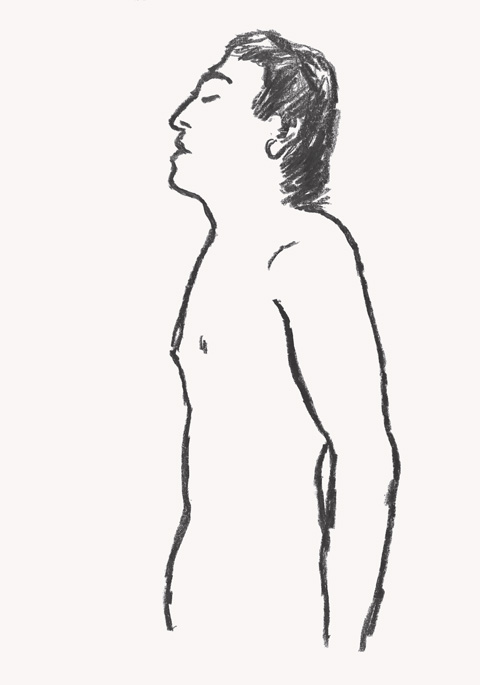Arquivo
2012
The Worst Flowers: Drawing 1990-1996
A 22 DE JANEIRO DE 2012
2€

Esta exposição é uma apresentação muito extensa e representativa do trabalho de desenho que José Loureiro (Mangualde, 1961) realizou entre 1990 e 1996. Quase todos os desenhos ficaram arredados do olhar do público, guardados nas gavetas do atelier do artista. E no entanto, estamos diante de um corpo de trabalho fundamental na sua prática artística desses anos, e determinante, além do mais, para se poder (finalmente) compreender a pesquisa que o levou do campo da figuração para o campo da abstracção, onde o seu trabalho se tem inscrito desde meados da década de 1990.
Mais do que a quantidade de desenhos produzidos por José Loureiro ao longo deste período (a exposição contempla uma cuidadosa selecção de cerca de 300 desenhos), é impressionante a diversidade de motivos, de tipos de composição, de técnicas, de maneiras de desenhar e de estilos que o artista explorou e desenvolveu ao longo de um período de tempo relativamente curto. E mais do que a descontinuidade entre a figuração e a abstracção, que se torna flagrante em determinado momento da exposição, surpreendem as sucessivas descontinuidades que atravessam a sua produção de desenho no período considerado, o qual pode ser abreviadamente subdividido em três fases principais: a dos desenhos figurativos a guache de 1990; a dos desenhos simétricos a grafite (com recurso pontual ao crayon conté e ao guache) de 1992, a que se juntam outros desenhos feitos igualmente em folhas de 70 por 100 centímetros; e a dos desenhos a grafite, guache ou caneta de feltro, realizados entre 1994 e 1996, que exploram a grelha como dispositivo de composição na construção de padrões de quadrados ou bolas.
Como o artista diz na entrevista publicada no catálogo da exposição (e acessível, numa versão reduzida, no jornal da exposição): “Repisar as coisas é essencial para mim. Repisar é quase um sinónimo de desenhar. Repisando as coisas, conseguimos percebê-las melhor. Lemos e relemos, lemos e relemos, lemos e relemos, e com alguma sorte lá começamos a entender alguma coisa do que se está a passar.” E um pouco mais à frente: “Nas sucessivas séries de desenhos tentava pegar numa determinada coisa e, de certa maneira, exauri-la, trabalhando obstinadamente, compulsivamente, sobre ela. [...] Acontece que, inesperadamente, num momento qualquer, [os assuntos] nos parecem esgotados. E eu também estou esgotado e não quero mais continuar com aquilo. Passo a outra coisa e lá continuo a repisar com renovada energia.”
A exposição está organizada segundo um clarificador critério cronológico.
This exhibition presents an extensive and representative sample of the drawings that José Loureiro (Mangualde, 1961) made between 1990 and 1996. Almost all of these drawings have been kept well away from the public gaze in drawers at the artist’s studio. And yet we are faced with a body of work that was fundamental in the artist’s practice during these years, and is crucial for our (finally) being able to understand the research that led him from the field of figuration to the field of abstraction, around which his work has been centred since the mid-1990s.
Besides the sheer number of drawings produced by José Loureiro over this period (the exhibition consists of a carefully selected corpus of roughly 300 drawings), what is most impressive is the range of motifs that the artist used, the different types of composition, techniques, ways of drawing and styles that he explored and developed over a relatively short period of time. And more than the discontinuity between figuration and abstraction, which becomes particularly clear at a certain moment in the exhibition, what is surprising are the successive discontinuities that are to be found throughout his drawing production in the period under consideration, which can be roughly subdivided into three main phases: that of the figurative gouache drawings from 1990; that of the symmetrical graphite drawings (with the occasional use of conté crayon and gouache) from 1992, together with other drawings also made on sheets of paper measuring 70 by 100 centimetres; and that of the drawings made in graphite, gouache or felt-tip pen, between 1994 and 1996, which explore the grid as a compositional device for creating patterns of squares or circles.
As the artist says in an interview published in the exhibition catalogue (and made available in an abridged version in the exhibition journal): “Reworking things over and over again is essential for me. Reworking is almost a synonym for drawing. By doing things repeatedly, we manage to understand them better. We read and re-read, read and re-read, read and re-read, and, if we’re lucky, we begin to grasp some notion of what’s happening.” And a little further on he says: “In the successive series of drawings, I tried to take a certain thing and, in some way, exhaust it, working on it obstinately and compulsively. [...] It happens that, unexpectedly, at some point, [the subjects] seem to be exhausted. And I myself am exhausted and don’t wish to carry on with that any longer. I move on to something else and continue to repeat that with renewed vigour.”
The exhibition is organised according to a chronological and clarifying criterion.
